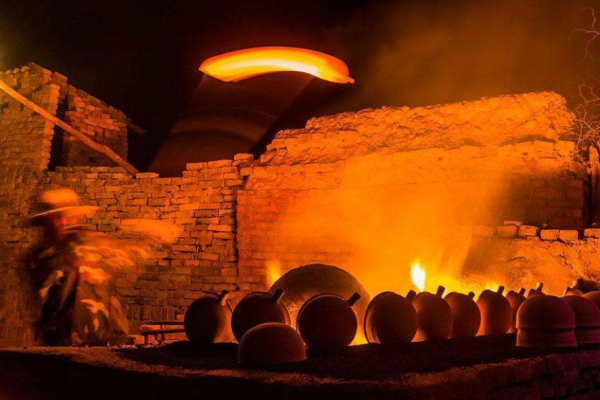Определение рефрактерных кирпичей: Рефрактерные кирпичи-это высокотемпературные материалы, которые используются для линейных печей, печи, и другое термическое технологическое оборудование. Они предназначены для выдержания экстремальных температур, суровые химические вещества, и другие условия, которые могут привести к выходу из строя регулярных строительных материалов.
Важность выбора правильного невосприимчивого материала для вашего применения: Выбор соответствующего рефрактерного материала имеет решающее значение для поддержания целостности печи и достижения оптимальной производительности. Использование неправильного материала может привести к дорогостоящим ремонтам, Снижение эффективности, и даже опасности безопасности.
Обзор различных типов рефрактерных кирпичей: Рефрактерные кирпичи бывают разных типов и композиций, каждый со своими уникальными свойствами и преимуществами. Некоторые из наиболее распространенных типов включают огненные мощи, кирпичи с высоким содержанием глинозема, силикатный кирпич, муллитовые кирпичи, глиняные кирпичи, магнезиальные кирпичи, а также AZS кирпичи.


Понимание вашего приложения
Важность понимания условий эксплуатации вашей печи/печи/духовки: Чтобы выбрать правильный рефрактерный материал, важно иметь тщательное понимание среды, в которой она будет использоваться. Такие факторы, как температура, химический состав, и все другие переменные будут влиять на производительность материала.
Факторы, которые следует учитывать при выборе рефрактерных кирпичей: При выборе рефрактерных кирпичей, Есть несколько ключевых факторов, которые следует учитывать. К ним относятся диапазон температуры, химический состав, сопротивление истиранию, термостойкость, теплопроводность, и пористость.
Виды огнеупорного кирпича
А. огнеупорные кирпичи: Огненные мощи изготовлены из рефрактерной глины и имеют превосходную стойкость теплового шока. Они обычно используются в высокотемпературных приложениях, таких как накладки печи и прокладки дымоходов.
Б. Высокоглиноземистые кирпичи: Высокие глиноземные кирпичи изготовлены из глинозема и других рефрактерных материалов, и известны своей превосходной силой и сопротивлением истиранию. Они часто используются в применении стали и других тяжелых промышленности.
С. силикатный кирпич: Силиковые кирпичи изготовлены из кремнезема и устойчивы к кислым средам. Они часто используются в отрасли стекла и керамики.
Д. Муллитовые кирпичи: Муллитные кирпичи сделаны из муллита, тип минерала, который известен своим высокотемпературным сопротивлением. Они часто используются при производстве железа и стали.
Эн. Глиняные кирпичи: Глиняные кирпичи изготавливаются из огненной глины и часто используются в низкотемпературных приложениях, таких как накладки камина и дымоходы.
Фон. магнезиальные кирпичи: Магнезия кирпичи сделаны из магнезии и очень устойчивы к щелочной среде. Они часто используются в производстве цемента и лайма.
Глин. АЗС Кирпичи: Огненные кирпичи AZS сделаны из глинозема, Циркония, и кремний, и очень устойчивы к высоким температурам и тепловым шоком. Они часто используются в стеклянной и стальной промышленности.


Выбор правильного рефрактерного кирпичного материала
Факторы, которые следует учитывать при выборе конкретного рефрактерного кирпичного материала
Химический состав: Каждый тип рефрактерного кирпича предназначен для обработки определенных химических композиций. Убедитесь, что выбранная вами материал подходит для химической композиции вашего приложения.
Теплопроводность: Теплопроводность измеряет скорость, с которой тепло проходит через материал. Если ваше приложение требует эффективной теплопередачи, Подумайте о выборе кирпича с высокой теплопроводностью.
Устойчивость к истиранию: Устойчивость к истиранию имеет важное значение для применений, которые включают в себя поток материала или высокое механическое воздействие. Если ваше приложение требует сопротивления истирания, Подумайте о выборе огненной мощи с высокой твердостью.
Пористость: Пористость влияет на способность кирпича противостоять тепловому шоку. Если ваше приложение включает в себя быстрые изменения температуры, Подумайте о том, чтобы выбрать огнеупорный кирпич с низкой пористостью.
Сравнение различных типов рефрактерных кирпичей
Сильные и слабые стороны: Каждый тип рефрактерного кирпича имеет свои сильные и слабые стороны, в зависимости от приложения. Например, Огненные мощи имеют отличную сопротивление теплового шока, Но плохая сопротивление истирания.
Расходы: Затраты на различные огнеупорные материалы для огненной могилы варьируются в зависимости от используемого сырья и производственного процесса. Рассмотрим свой бюджет при выборе определенного типа рефрактерного кирпича.


Советы по выбору правильного невосприимчивого кирпичного материала для вашего применения
Проконсультируйтесь с экспертом: Если вы не уверены, какой тип рефрактерного кирпича лучше всего подходит для вашего приложения, Рассмотрим консультацию с экспертом. Они могут помочь вам принять обоснованное решение на основе ваших конкретных потребностей.
Рассмотрим условия эксплуатации: Условия работы вашего приложения, например, температура, химический состав, и механическое воздействие, Следует направлять ваш выбор из рефрактерного кирпичного материала.
Рассмотрим срок службы приложения: Если ваша приложение требует долгосрочного использования, Подумайте о выборе нетокого кирпичного материала, который имеет более длительный срок службы и требует меньшего обслуживания.
Установка и обслуживание рефрактерных кирпичей
Лучшие методы установки рефрактерных кирпичей
Убедитесь, что огнеустойчивые кирпичи правильно выровнены и выровнены.
Используйте высококачественные растворы и изоляционные материалы для обеспечения эффективной теплопередачи и изоляции.
Позвольте кирпичи правильно вылечить перед стрельбой по печи.
Общие проблемы с техническим обслуживанием и как их решить
Трещины и повреждения: Трещины и повреждения могут возникнуть из -за теплового удара или механического воздействия. Регулярные проверки могут помочь выявить проблемы, прежде чем они станут серьезными.
Коррозия: Коррозия может возникнуть из -за химического состава применения. Выбор рефрактерного кирпичного материала, устойчивого к коррозии, может помочь предотвратить эту проблему.
Эрозия: Эрозия может возникнуть из -за материала или истирания. Выбор кирпичного материала с высокой сопротивлением истирания может помочь предотвратить эту проблему.
Важность регулярных проверок и ремонта
Регулярные проверки могут помочь выявить проблемы, прежде чем они станут серьезными и приведут к дорогостоящим ремонтам.
Ремонт быстрых огнеупорный кирпич для печей и предотвратить повреждение других компонентов печи.
Заключение
Резюме ключевых моментов: Выбор правильного огнеупорного материала для вашего применения имеет решающее значение для обеспечения эффективной и безопасной работы печи.
Последние мысли: Учитывая условия работы, продолжительность жизни, и требования к обслуживанию вашей заявки, Вы можете принять обоснованное решение о том, какой рефрактерный кирпичный материал выбрать.
С надлежащей установкой и обслуживанием, Ваш рефрактерный кирпич может обеспечить долгосрочный, надежная производительность.
